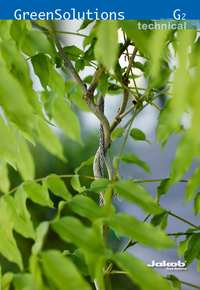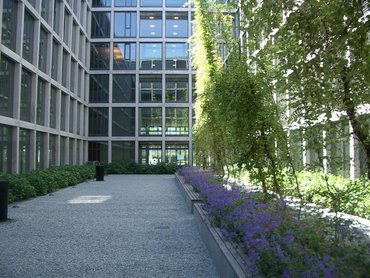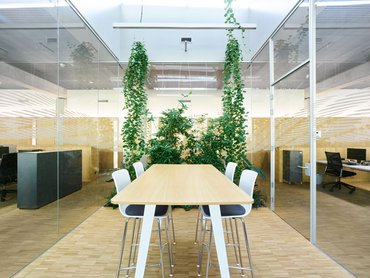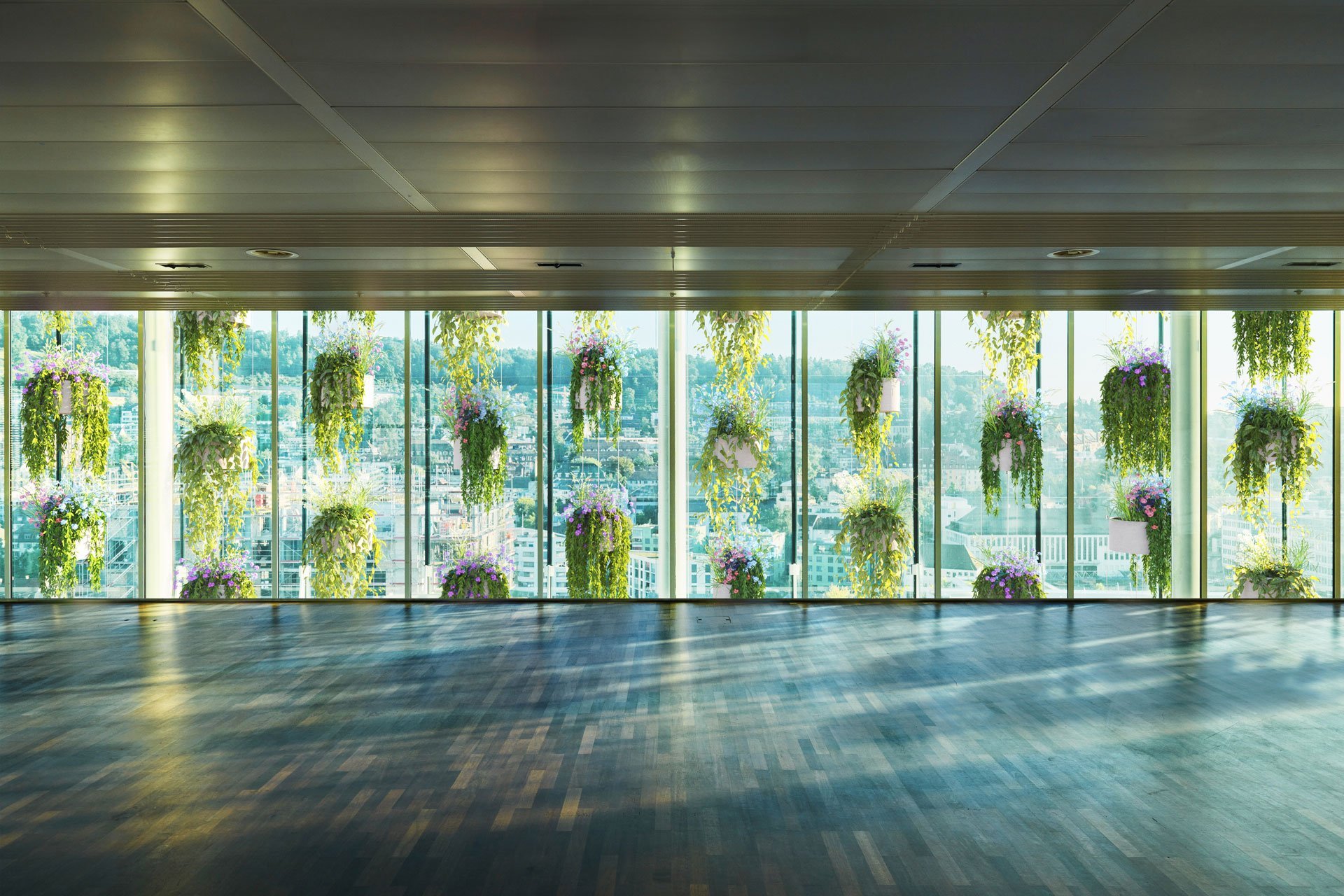
Green courtyards with climbing structures
How can rope and net structures be used for the greening of courtyards and atriums? What shapes and dimensions are possible? And what needs to be considered? Our answers to the most important questions about greening with climbing structures.
The greening of courtyards with climbing structures is an interesting way to give spaces more quality of stay. The need for greened courtyards often arises in cities. Inner courtyards of office complexes and administrative buildings, atriums of banks, hospitals or other care facilities are places where we have been allowed to plan and install climbing structures for greening. Wherever places to stay should be enlivened, tendril structures can create green spaces.
Variety of shapes and dimensions
The tendril structures for greening consist of support ropes that are stretched horizontally and attached to the building structure. They are usually attached to the walls of the courtyard or atrium. The actual climbing structures are attached to the support cables. These can consist of ropes, nets, rings and other forms.
With the use of climbing structures, greening projects can be realized in a wide variety of shapes and dimensions. Cylindrical shapes are used, on which climbing plants grow upwards over several levels, blunt cones, irregular shapes, vertical tendril ropes in combination with rings or other geometries. Horizontally or vertically stretched nets are also possible.
The impact of green structures
In buildings and their courtyards, greening structures create visual, acoustic and even olfactory enhancement. Empty atriums and courtyards filled with green growth take on a lively and vegetative sense of space. A change in acoustics becomes noticeable. Plants lower noise levels and reduce sound. Depending on the choice of planting, subtle fragrances are also created by inflorescences and natural vegetation. From all adjoining rooms there are attractive views of the greenery growing upwards. Stays in the courtyards and atriums become an experience.
Planning and installation
The starting point is usually a design by the architects and landscape designers. The landscape planners then select the appropriate plants and growth forms. With these specifications, Jakob Rope Systems plans the ideal climbing structures for the greenery. We take into account: the weight of the growing plants, the desired growth forms and directions, the forces acting at the attachment points on the structure. From all these parameters, we develop the appropriate dimensions of the supporting ropes and tendril structures.
The variants of greened structures
The greenery grows from plant pots or vessels of various shapes. The vessels are placed near the ground or distributed over tiers. High-growing plants can thus grow from below. Less tall growing plants are integrated from higher tiers. Planters close to the ground are often combined with seating.
Common questions in the greening of courtyards
- Sufficient light: One of the most important questions that determines the success of a greened patio is: Does the location provide enough light for the plants to grow? The amount of light also determines the shape and course of the climbing structure used to guide the plants to the light. Landscape designers usually check the light conditions on site and select the appropriate plants and growth forms based on this.
- Attachment of the climbing structure: For this purpose, support rope structures are attached to the walls of the courtyard. Usually at the level of the floors of the adjacent rooms. In our projects, we determine during the planning stage where the rope structures and the acting tensile forces can best be attached. This is done in consultation with the building's structural engineers.
- Fire protection specifications: An important point that we clarify with the responsible fire protection authorities at every planning stage. Depending on the project, city, country, structure and building height, we have to consider different specifications for fire protection in our projects.
- Irrigation: Water and nutrients are best delivered to the plant containers via an automatically controlled supply. The landscape designers plan the appropriate system for this. The integrated irrigation system is optimally adapted to the climatic conditions and the needs of the plants by means of sensors.
- Lifespan and maintenance of the climbing structures: Properly installed, the climbing structures will last 30 to 50 years without any problems. Only the plants require care such as nutrient supply, pruning and cleaning when leaves are shed. In the case of strong growth, we check the tensile forces acting on the support ropes at certain intervals. Depending on growth, we recommend this every three to five years.
Find here a selection of our projects
Downloads

The program is presented in two parts. The catalog GreenSolutions Technical contains all wire rope products with their technical information for your greening project.
Download
The program is presented in two parts. In the GreenSolutions reference brochure, you will find many real-world applications that show you the potential of greening.
Download
The Forte product line combines high-quality ropes and tension rod systems. This creates a wide range of combinable components with uniform dimensions.
Download




































